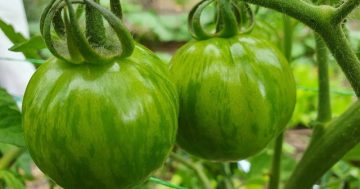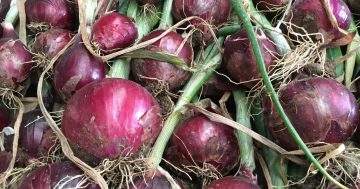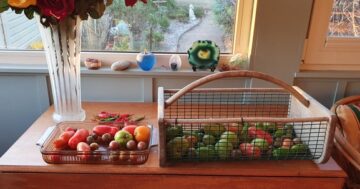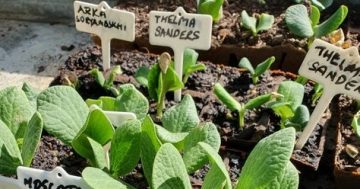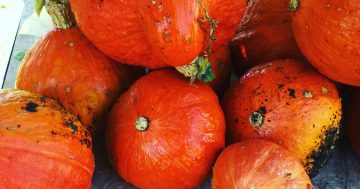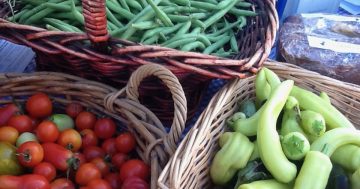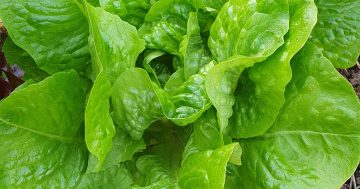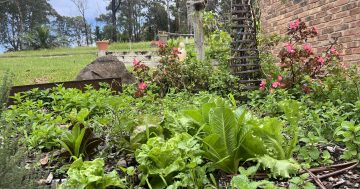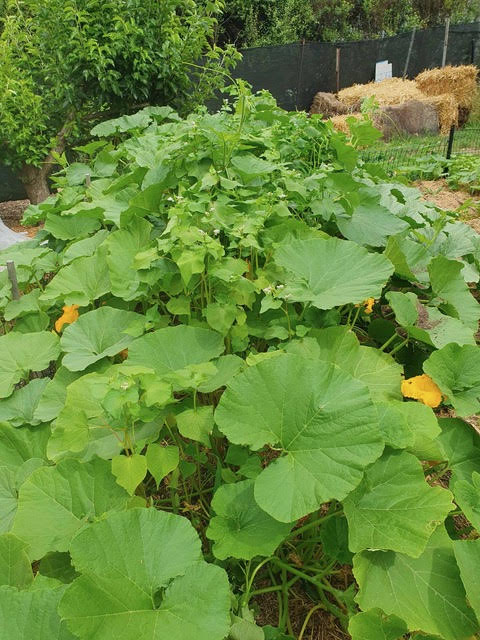
Pumpkin planted with buckwheat. Photo Wynlen House.
What wonderful weather we had for Christmas in our cool/cold climate region!
The warm to very warm days and warmer-than-usual nights have pushed the summer vegetables closer to maturity. The corn looks taller and are pumpkins already fattening on the vine. January is bringing more of the same warm weather to our region but, unfortunately, less rain than expected.
With warm weather and less rainfall this month, efficient watering and mulching will be the key to keeping your vegetable garden productive.
An efficient watering regime in a hot summer will include a combination of hand watering and drip irrigation. It can also account for the fact that soil aeration is needed for good water penetration, so gentle tilling before planting is recommended. Seedlings are preferred to seeds (the usual exceptions, such as beans, apply), and close planting is favoured as it creates a living mulch.
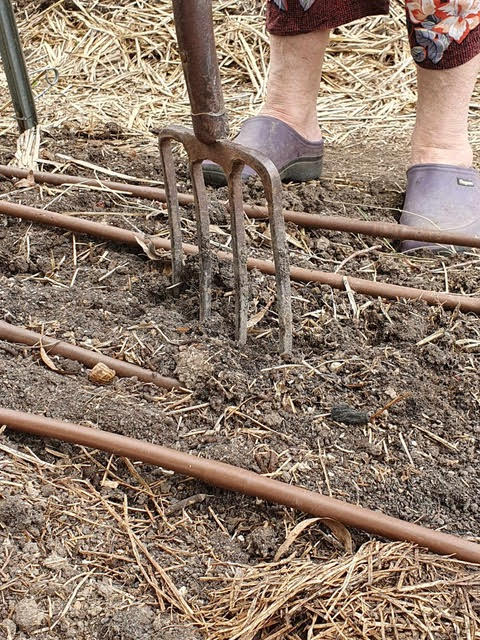
Twisting a fork to mix in amendments. Photo: Wynlen House.
Get started by preparing the beds or spaces for planting, adding and stirring in your amendments with a claw or three-pronged hoe, or using a slight stirring action with a garden fork, making sure the soil structure is nicely friable to support water penetration.
Install new drip irrigation if needed and check that the existing drip irrigation is working well. Ideally, assuming a closely planted, well-filled, 90 cm-wide bed, you would have four lines of irrigation between 15 cm and 20 cm apart. The idea is to use the least amount of water possible, especially as water corporations and councils have recently pushed the cost of water supply to stellar levels.
It is best to hand-water seedlings, as their roots are small and using an irrigation system wastes water.
Once the seedlings are well established and have a good root mass (generally equal to plant growth), they can best benefit from the drip irrigation system.
If planting into an established bed, it is still beneficial to support new seedlings with hand watering even though you are also watering the bed with your irrigation system. Seedlings have a small root system and can suffer from transplant shock and heat stress, particularly in hot, dry summers.
Mulching is also a helpful practice in the current weather conditions.
Research has shown that a mix of materials, such as leaf debris, grass cuttings, sugar cane mulch, or similar, makes for a “chunky” mulch that allows water/rain to travel through but also reduces evaporation.
Furthermore, the ideal depth of around 10 cm with no less than 5 cm has been shown to be the most efficient. Watering in the evening will give the water time to soak in and spread out in the soil. In hot, dry conditions, there is little risk of mould or mildew-type diseases with evening watering.
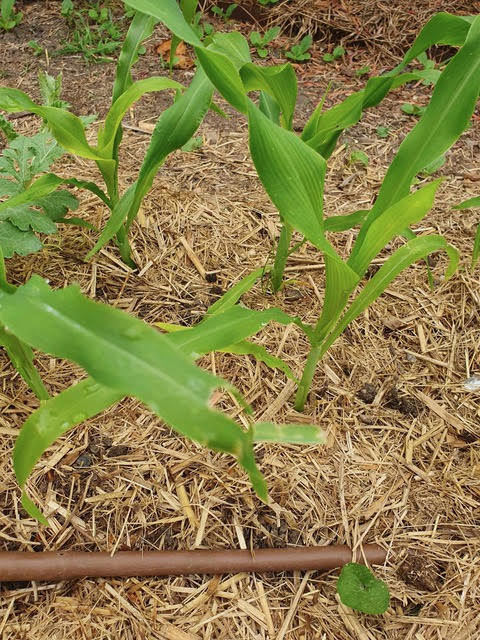
Young corn well mulched. Photo Wynlen House.
Planting cucumber, zucchini, bush squash, corn, short-season pumpkins and early-season potatoes as seedlings can continue for those that mature in 75 to 90 days, but it is now too late to plant tomatoes, chilli capsicum and eggplant.
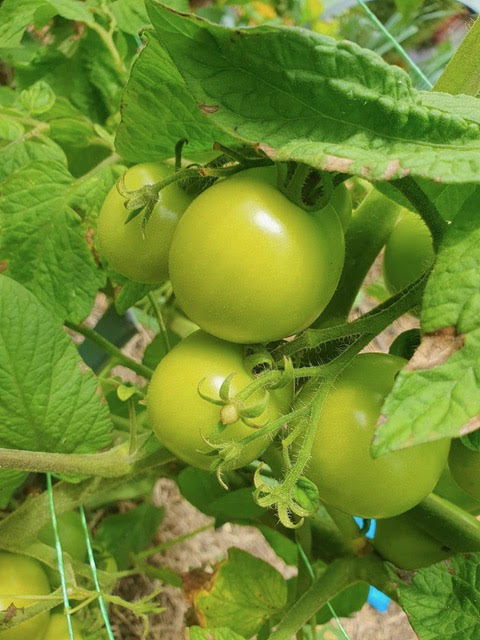
Ripening tomatoes. Photo: Wynlen House.
In our demonstration garden, we have copious plantings of tomatoes and chilli and welcome a glut or at least enough surplus for preserving! This year, the tomatoes are coming on early for us, and hopefully, they will be in your location due to hot weather.
Suggestions for further January planting of seedlings always include beetroot, bulbing fennel and all members of the brassica family.
Brussel sprouts are the most important brassica family member to plant as seedlings in January. Many garden nurseries now stock these seedlings.
Beetroot is a favourite for planting from mid-spring right through to late summer.
Beetroot can be eaten in golf ball-size or much bigger, adding colour and deliciousness to mealtimes for many months. It is a Chenopod, a group that doesn’t include many edible plants apart from silver beet and edible amaranth, so it is a bit special.
Besides, it is very versatile as a side vegetable when roasted, boiled, shredded in a salad or pickled. Like most vegetables, the secret to growing delectable beets is soil with plenty of organic matter and an organic fertiliser that is not high in nitrogen. Strong soil structure supports the taproot, which holds up the bulb, so very sandy soil is not ideal for this plant. Beetroot grows well in sunny or semi-shaded locations and with many other vegetables but is just as happy on its own.
Interplant with large brassicas such as broccoli, cauliflower and cabbage. It grows well with kohlrabi, lettuce and Asian radishes, too.
Beetroot is one of the few root vegetables that grow well from a seedling. Planting out as seedlings in midsummer can avoid losses that can occur from heat damage when young seedlings emerge in summer temperatures that are too warm for them. Everything you can plant now as seedlings can also be planted as seeds, except for Brussel sprouts. Brussel sprouts seedlings planted this month and into February can take advantage of the rest of summer to grow a tall, strong frame to support those marvellous sprouts when they appear in late autumn and winter.
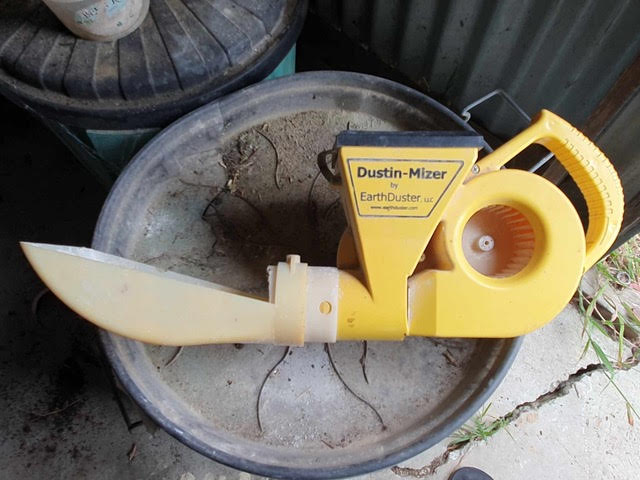
Our atomiser for Derris dust – there are plenty of brands available now for applying fine dusts. Photo: Wyblen House.
Finally, we are happy to report that we have had a big win against flea beetles, which have been destroying the potato crop with great gusto for the last two years. The killer tactic is a very thin dusting of derris dust and/or diatomaceous earth! Using an applicator to apply the dust is extremely efficient and effective. We got one many years ago and haven’t looked back.
Bronwyn Richards and Helen Lynch run Wynlen House Artisan Village Farm and Learning Centre, a small village organic market garden in Braidwood, NSW. Since 2006 they have grown and sold fresh vegetables, eggs, preserves and garlic, and teach others to do the same.












